LA Design Challenge: Green Cars of the Future

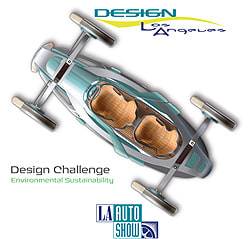
Doc Brown would have been proud. Nine automakers have submitted entries in the upcoming Los Angeles Auto Show’s Design Challenge, a competition aimed at conceiving a futuristic car that’s environmentally friendly, by both design and fuel source, and can be recycled after five years on the road. It’s the third such competition sponsored by the auto show, and all entries are strictly two-dimensional. Judges choose a winner based on originality, environmentalism, safety and how well it reflects Southern California’s “green” lifestyle.
For details on the winner, stay tuned for our full L.A. Auto Show coverage coming at the end of November. For now, here’s a sneak peek.

Acura FCX 2020 Le Mans: Try saying it six times fast. The Le Mans looks like the Batmobile, but uses lightweight, recyclable materials. A hydrogen fuel-cell drivetrain propels it to take on a future 24 Hours of Le Mans, while molecular nanotechnology allows lightweight construction.
Thumbs up: Motors in each wheel assist the hydrogen powertrain, effectively creating AWD.
Thumbs down: Drivers must lie flat on their stomachs.
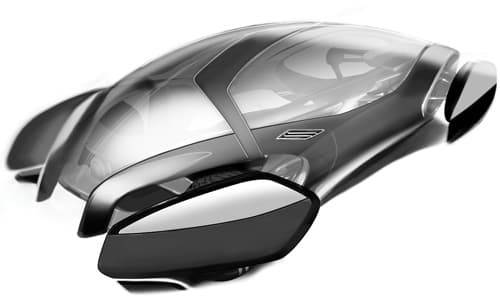
Audi Dynamic Space Frame: The Space Frame has built-in channels to facilitate an elaborate drive-by-fluid system. That’s right: Instead of a traditional mechanical linkage between the steering and the wheels, there’s a fluid coupling. The car’s suspension also features liquid portions that are electrically charged to alter the car’s ride.
Thumbs up: The minimal overhangs and gigantic wheels project an athletic stance.
Thumbs down: The suspension concept exists today, but the fluid driveshaft seems like a giant torque converter – hardly the stuff of efficiency.

Hummer O2: GM’s California design studios say the O2 has a net positive effect on the environment thanks to its algae-filled panels, which turn carbon dioxide into oxygen. Other features include a fuel cell drivetrain and parts made from post-consumer recycled materials.
Thumbs up: Hydraulic motors power all four wheels, and carbon dioxide from each motor is routed toward the algae.
Thumbs down: The algae need to be changed annually. We doubt Jiffy Lube will offer a $29.99 special.
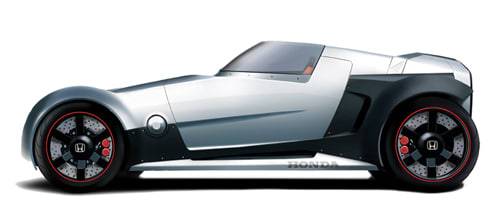
Honda Extreme: Honda’s Extreme can take on different forms – from a pickup truck to a low-slung sports car – thanks to interchangeable body panels. After five years, the polycarbonate chassis can be recycled.
Thumbs up: Evolving body styles on the same car? Sign us up.
Thumbs down: Sheet-metal makeovers come courtesy of Honda Sustainability Centers, which look like miniature airport terminals with hokey status readouts like “transforming” and “transformation complete.”
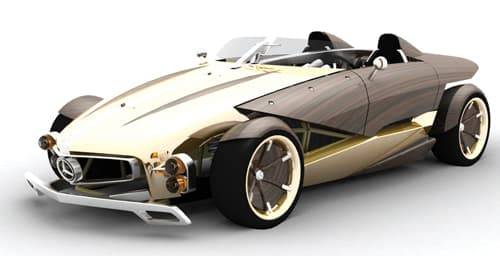
Mercedes-Benz RECY: The RECY, an open-air roadster that looks like it took a few cues from the 1980s SL, offers wood, alloy, glass and rubber materials said to be 100 percent recyclable. A BlueTec diesel engine provides power. Design inspiration came from wooden yachts and sunglasses, Mercedes says.
Thumbs up: Unlike many objects of automotive inspiration, these things actually show up in the concept. The two-frame windshield looks like a pair of Oakleys, and the body has a nautical profile.
Thumbs down: A long aluminum brace splits the two seats. Seems like it could put a crunch on shoulder room.
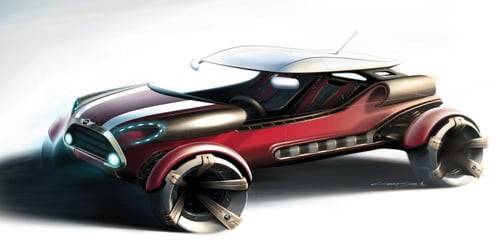
MINI Biomoke: The Biomoke sports biodegradable paneling infused with palm tree seeds. When the car expires, the panels compost and the seeds sprout. There are no windows – Mini says the open-air cockpit is best for Southern California’s temperate climate. And like Mini’s real cars, the Biomoke’s exterior can be customized to fit its owner’s tastes.
Thumbs up: We’re still chuckling about the palm tree seeds.
Thumbs down: Temperate climate notwithstanding, a mile on the 405 without a windshield could bury drivers in grit.
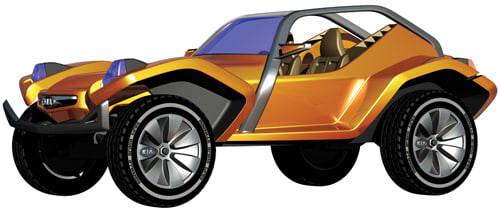
Kia Sandstorm: Kia says its two-seat runabout can hit the beach or navigate through highway traffic. Its aluminum safety cage protects occupants, while cargo space can accommodate a barbecue. Power comes from a biodiesel hybrid engine with plug-in electric capability and recyclable batteries.
Thumbs up: It looks like a genuine dune buggy, so it’s sure to be a hit at the beach.
Thumbs down: We’re all for minimizing waste, but having detachable recycling bins inside the cabin seems a bit overboard.

Toyota RLV: The Renewable Lifestyle Vehicle seats two, one behind the other. Power comes from an electric powertrain or bicycle-style pedals, the latter for situations like bumper-to-bumper traffic. A pop-up roll cage and active headrests aim to protect occupants during a rollover, and the floorboard is made from bamboo and aluminum.
Thumbs up: Pedaling recharges the battery, and the wheels telescope outward for better high-speed stability.
Thumbs down: Since you’re giving him a lift, there ought to be an extra set of pedals for the passenger.
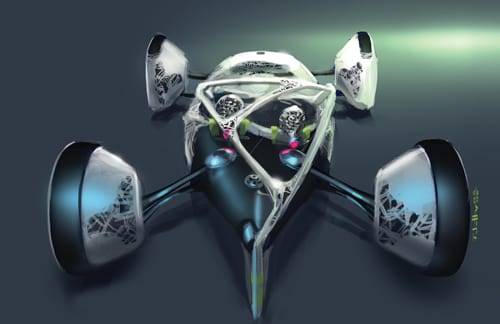
Volkswagen Nanospyder: The Nanospyder uses billions of spore-like nanobots – complete with eyeballs, mouths and tiny VW logos – that bind together to create the vehicle. Impending collisions can be picked up by the lead bots, and the information can be sent elsewhere to bolster certain sections of the vehicle.
Thumbs up: Hands down, Nanospyder is the coolest name here.
Thumbs down: Stability depends on these little critters getting along. What happens when you’re doing 65 on an overpass and the bots holding the wheels together decide to mutiny?

Former Assistant Managing Editor-News Kelsey Mays likes quality, reliability, safety and practicality. But he also likes a fair price.
Featured stories




